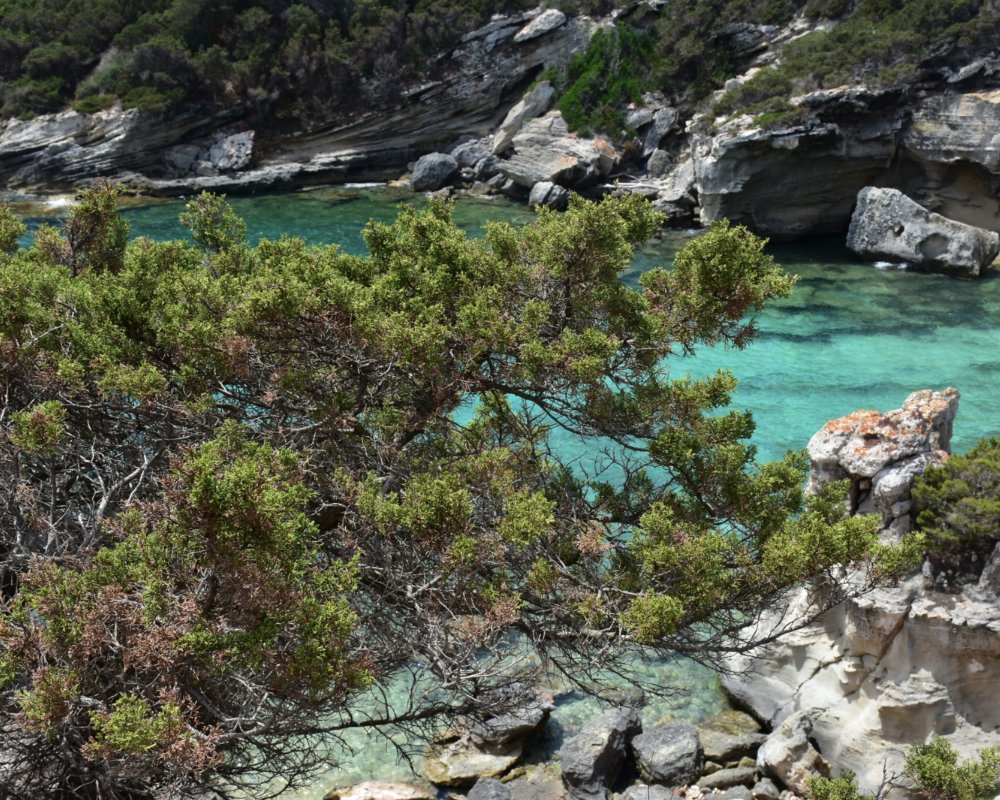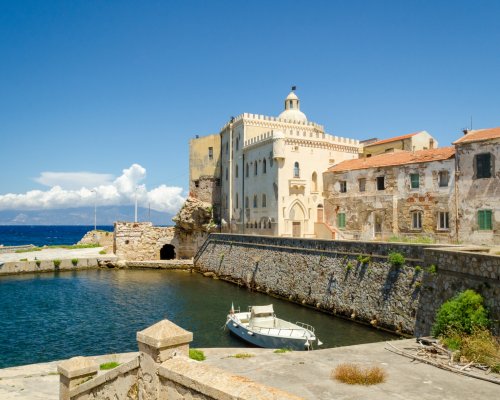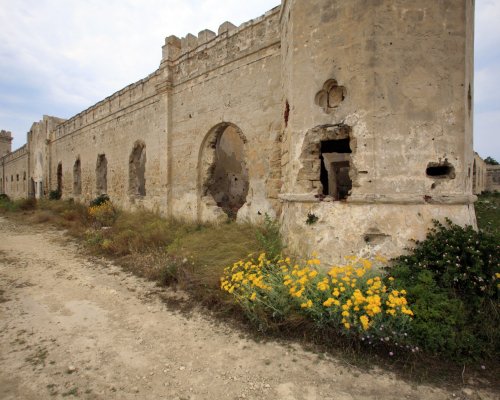


A walk through the history and nature of the island of silence
Immersed in the blue of the Tyrrhenian Sea, between the Tuscan coast and Corsica, Pianosa, with its maximum altitude of 29 metres, rests on the water like a leaf. Just like in other cases of former prison islands, Pianosa has also conserved its nature intact after its prisons closed down thanks to the Arcipelago Toscano National Park. Still today, access to the island is reserved to a limited number of people. Visits and hikes on the island are only possible accompanied by a guide and must adhere to strict rules in order to protect the environment. With the support of the guides, visitors can hike through nature both on the coast and inland.
Visitors walk in the shade of the characteristic dry stone walls, immersed in the Mediterranean scrub, between the ex-prison outposts, or discover the island’s geological origins and the history of the formation of its fossils, admiring the little cliffs that descend into the crystal-clear sea. Toward the south of the island, visitors can embark upon a hike that explores the ancient paleontological history of Pianosa, visiting the grotto in the Bay of Biagio where pre-historic tools were discovered and reconstructed models of artefacts can be found. For lovers of archeology-related hiking, it’s possible to reach the ruins of the villa of Agrippa Postumus, around Giovanna Bay, where, after a good walk in the summer season, visitors can dive into the blue waters of the bay.
This is one of the most famous hikes on the island, an easy walk along the coast, amidst the colours and fragrances of the Mediterranean scrub, leading to Pianosa’s northern promontory. During the walk, the guide will point out the historic sedimentation that characterizes the island, along with the most important aspects of its nature. The hike begins at the port, from where visitors can reach the town via a brief, straight road to the courtyard just before the church, at the entrance to the penal farming colony. Once beyond the tall border wall that separates the town from the prison area, take the sunny road that starts off running along the wall before branching off toward the coast, reaching the ruins of the Villa of Agrippa Postumus. Walk through the ruins of the villa, where Agrippa was sent in exile between 7 and 14 BCE by Augustus. The emperor that had adopted him did so because he favoured Tiberius as his replacement, and exiling Agrippa would eliminate his rival. Out of the ancient buildings that were originally paved with black and white mosaics and embellished with decorations of mythological sea creatures, only the ruins of a small theatre, the thermal baths, the reception hall, two nymphaea and a terrace overlooking the bay are all that remain. These are the areas that, according to Roman historians, Agrippa preferred, where he would fish and hang out in front of the sea.
This is one of the most famous hikes on the island, an easy walk along the coast, amidst the colours and fragrances of the Mediterranean scrub, leading to Pianosa’s northern promontory. During the walk, the guide will point out the historic sedimentation that characterizes the island, along with the most important aspects of its nature. The hike begins at the port, from where visitors can reach the town via a brief, straight road to the courtyard just before the church, at the entrance to the penal farming colony. Once beyond the tall border wall that separates the town from the prison area, take the sunny road that starts off running along the wall before branching off toward the coast, reaching the ruins of the Villa of Agrippa Postumus. Walk through the ruins of the villa, where Agrippa was sent in exile between 7 and 14 BCE by Augustus. The emperor that had adopted him did so because he favoured Tiberius as his replacement, and exiling Agrippa would eliminate his rival. Out of the ancient buildings that were originally paved with black and white mosaics and embellished with decorations of mythological sea creatures, only the ruins of a small theatre, the thermal baths, the reception hall, two nymphaea and a terrace overlooking the bay are all that remain. These are the areas that, according to Roman historians, Agrippa preferred, where he would fish and hang out in front of the sea.
Leave the archeological ruins and the history of Agrippa behind as we continue the hike alongside the sea. While walking, observe the large amount of posidonia on the banks, carrying out the important role of containing the sand. Resting on the rocks off the coast, we can see some cormorants, while the route continues to move inland, reaching the ruins of the Casa del Marchese, known as the Convalescenziario (convalescent home in English). True to its name, this was where sick prisoners, particularly those suffering from tuberculosis, spent time recovering, and, for preventive measures, it was decided to use the building furthest from the port. After a short while, we’ll come across another beautiful cove, boasting a thousand shades of colour. What today is a beautiful landscape, for the Ancient Romans must have been “a deceiver for explorers,” a landing point that was anything but peaceful and safe, as the amphorae discovered here tell us. The seabed is often low along the coast, making Pianosa difficult to dock at. Back in the town, after a restorative break, visit the exhibition that recounts the history of Pianosa, its settlement and the penal colony. Before returning to the port, take a walk through the ghost town, with streets named after people tied to the fight against the mafia.
Leave the archeological ruins and the history of Agrippa behind as we continue the hike alongside the sea. While walking, observe the large amount of posidonia on the banks, carrying out the important role of containing the sand. Resting on the rocks off the coast, we can see some cormorants, while the route continues to move inland, reaching the ruins of the Casa del Marchese, known as the Convalescenziario (convalescent home in English). True to its name, this was where sick prisoners, particularly those suffering from tuberculosis, spent time recovering, and, for preventive measures, it was decided to use the building furthest from the port. After a short while, we’ll come across another beautiful cove, boasting a thousand shades of colour. What today is a beautiful landscape, for the Ancient Romans must have been “a deceiver for explorers,” a landing point that was anything but peaceful and safe, as the amphorae discovered here tell us. The seabed is often low along the coast, making Pianosa difficult to dock at. Back in the town, after a restorative break, visit the exhibition that recounts the history of Pianosa, its settlement and the penal colony. Before returning to the port, take a walk through the ghost town, with streets named after people tied to the fight against the mafia.